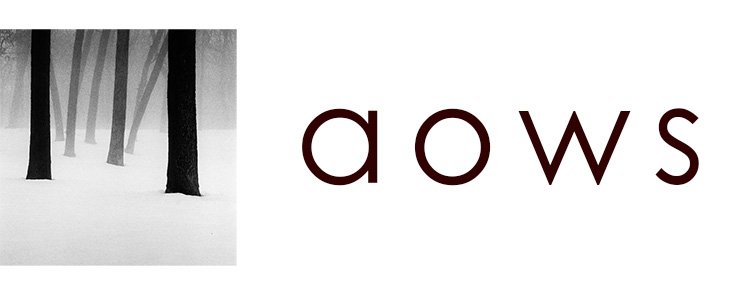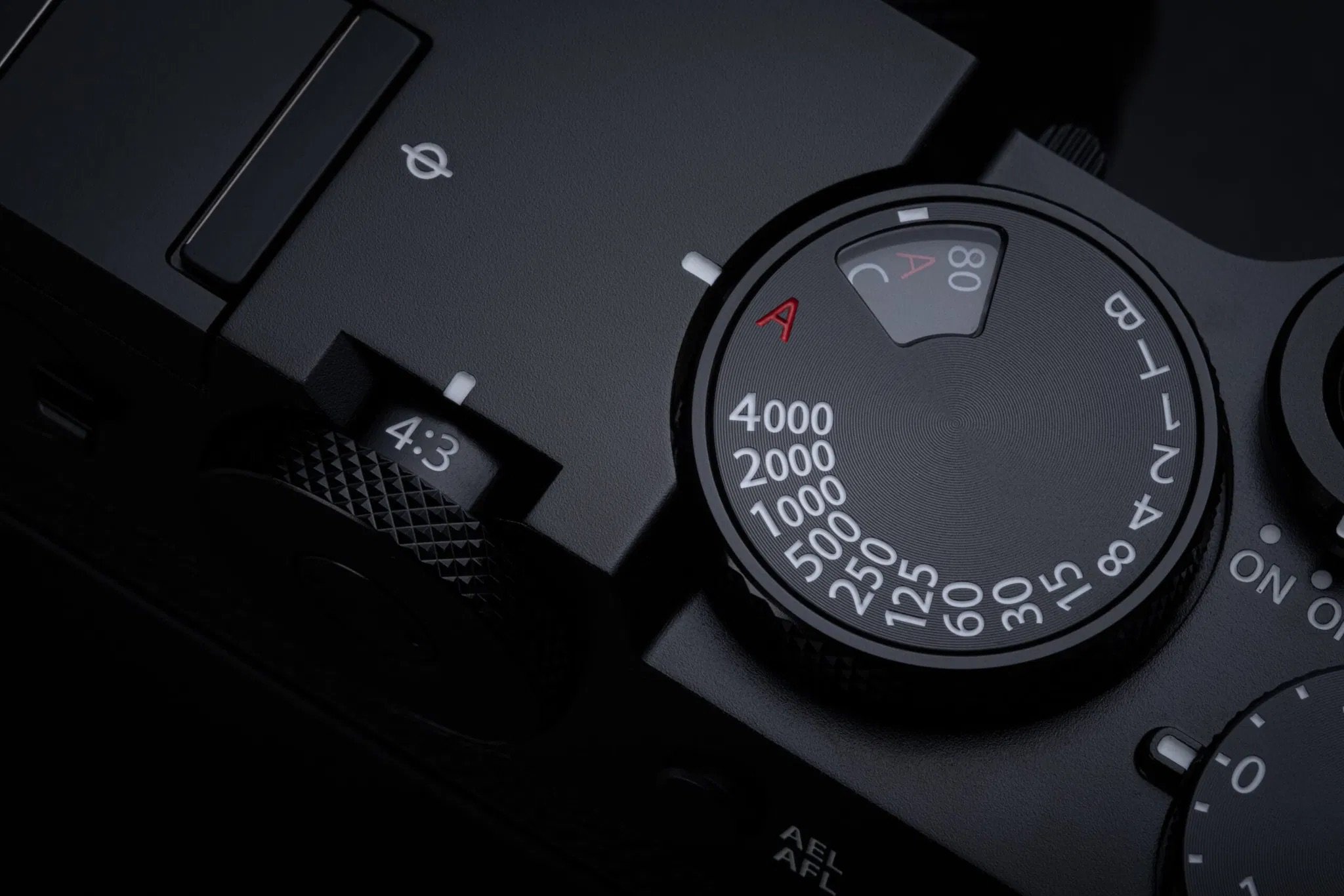Colorado, September 2020.
Recent images from San Francisco
A collection of photographs I've made over the last few weeks here in the city.
Roads of Scotland
A compilation of photos of Scottish roads from 2023.
Antennas
San Francisco, February 2025.
Obsessed
In 1977, on the sidewalk outside his loft on Twenty-third Street in Manhattan, the fifty-eight-year-old W. Eugene Smith watched from a wheelchair as some two dozen volunteers—mostly young photography students paying homage—loaded his life’s work into two shipping trucks.
When the shipment arrived in Tucson, it filled a high school gymnasium and spilled into outlying rooms.
Included in the shipment were three thousand matted and unmatted master prints; hundreds of thousands of meticulous 5 x 7 work prints; hundreds of thousands of negatives and contact sheets. There were hundreds of pocket spiral notebooks and thousands of 3 x 5 note cards with scribbled notes; maps and diagrams from all over the world; and hundreds of boxes of clipped magazine and newspaper articles. Smith wrote hundreds of fifteen-page single-spaced letters to family, friends, and people he barely knew, and he mimeographed copies before mailing them. There were dozens of cameras, various pieces of darkroom equipment, trash cans and boxes full of loose lens caps, rubber bands, and paper clips. Smith also had 25,000 vinyl records and 3,750 books.
[Smith’s] death certificate read “stroke” but, as was said of the immortal jazzman Charlie Parker, Smith died of “everything.” He was flat worn out. He’d given up. He left eighteen dollars in the bank, and forty-four thousand pounds of materials.
Gene Smith's Sink: A wide-angle view
I’ve long argued that you need to be obsessed if you want to become great at something. But Eugene Smith took this to extreme.
We have to commit to our art with either intensity or longevity. They are almost mutually exclusive, as ferocious intensity can’t be maintained for too long. Even if your mind can hold, your body will eventually fail, as happened to Smith. He died at 58, leaving many years of potential growth and work on the table.
Consistency and a healthier balance over a long period of time are usually the wiser choice.
6 unexpected ways more megapixels help my photography
More megapixels doesn't mean better photographs... but in many ways, high resolution sensors can make our lives as photographers much easier, and enable us to do things we couldn't do with fewer pixels.
Snowstorm in the Valley, X
Yosemite National Park, California, March 2025.
From the video It finally happened.
On Fuji cameras, dials, and the lost art of consistency
Fuji is getting a lot of attention thanks to the recently announced GFX100RF. What caught my attention from that camera wasn’t the fixed-lens, the medium format sensor, or the $5,000 price tag. It was the new “aspect ratio dial”.
This seems to be part of a new trend with Fuji cameras. Just a few months earlier, the X-T50 was the first to introduce a dedicated “film simulation dial”.
I celebrate when a manufacturer tries something new, but I can’t help but wonder what these new dials might be revealing about the times we live in.
Are photographers nowadays switching aspect ratios and film simulations so often that they need a dial for quick access?
It feels like a reflection of the modern creative mindset: constantly changing things, never sticking with something long enough to master it. There’s always a new, shiny trick that promises to change the game. Except it never does.
I’m starting to feel old-school when I advocate for consistency: the value of committing to a tool, a format, or an aesthetic for some time.
If one photo is 3:2 and color while the next is 1:1 and black and white, our work might end up feeling cluttered and directionless. It’s not just about cohesion in a portfolio, it’s about developing a personal vision.
A style doesn’t emerge from constantly switching things. It comes from working within some boundaries, constraints that force us to solve problems through creativity, instead of avoiding them.
Experimentation is good. But there’s a difference between thoughtful evolution and constant indecision. Sometimes, we just need to commit to something.
Fort Rosecrans National Cemetery, V & VII
San Diego, December 2024.
Chase what moves you
After months of absence, the fog finally returned to San Francisco last night. One of my favorite subjects in these conditions is the Golden Gate bridge, especially after sunset when the lights glow through the mist. So of course, I grabbed my camera and headed that way.
Oh, how I missed it!
The combination of fog, lights, and the low hum of fog horns echoing through the bay create an atmosphere that gives me goosebumps.
Standing there in those conditions felt similar to last week’s snowstorm in Yosemite, or to the time when Arches National Park became an otherworldly landscape, or to the fairy tale place that is Fanal in the island of Madeira. Those are the times that I live for, the ones that make photography so rewarding.
I’ve photographed the bridge in the fog many times before, and hopefully, I’ll do it many more times. These images never get much traction or attention, but that doesn’t matter: I love making them, being there makes me feel alive, and when I look at them later, the feelings rush back.
I’ll never get tired of photographing scenes that make me feel something. We have to chase what moves us.
Photography is not a recipe
I’m currently reading a photography book where the author lists their settings for every image. Normally, I’m skeptical about sharing that information, but an educational book seems like the one place where it might be justified to do so.
Many photographers seem obsessed with this kind of technical data, though. Not just the settings used but camera, lens, film stock, developing recipe, even the paper used for the final print. It’s not uncommon to see this information attached to photographs on social media; and even worse, in photo books.
The usual argument made for this is that it helps others learn how the image was made. But what do we really gain from knowing that a heavily compressed Instagram photo of a distant mountain was taken at f/7.1 and 1/250s?
If we truly want to offer insight into how an image was made, there are far more useful details we could share instead: Where and when was the image taken? Do those conditions happen often, or was it a rare occurrence? Tell me more about the story behind the shot: Why did you go there? Did you hike for hours, or did you pull over on the side of the road? If it was a hike, was it easy, or hard? What about the crowds? Seeing the original, unedited RAW file alongside the final image would also provide far more value. And most importantly: how did you feel when you were shooting your subject?
If the goal is to teach and inspire, this kind of information is infinitely more valuable than a list of settings.
Don’t get me wrong: settings matter. But most photographs could have been taken with different settings and they’d still look nearly the same. Because what truly shapes an image isn’t the aperture or shutter speed--it’s the light, the conditions, and the story told in the frame.
So why do we fixate on the settings?
I think it comes down to photography’s eternal struggle to be seen as an art. Some photographers might believe that sharing technical choices makes their work look more intentional, more serious, especially to those who don’t even know what they mean. The settings are the “secret ingredients” that the artist came up with to make the final result possible.
But photography isn’t a recipe. Greatness isn’t defined by the choice of ISO or shutter speed. A great photographer is insanely curious about the world. They notice what others overlook. They recognize beauty in front of them and know how to translate it into an image. They anticipate a moment unfolding and are ready to capture it.
You can recognize a great photographer not by what they say about their camera gear or settings, but by the passion in their eyes when they talk about their subjects.
Night time in the valley
Shoot wider than you need
Whenever I have a composition I like framed in my camera, before pressing the shutter I like to either zoom out, or take a step back.
While you can always crop in post (especially with a high-resolution camera), you can never “zoom out” after the fact.
By shooting wider than I need, I give myself room to fine-tune the framing later. Sometimes, I realize the composition needs more negative space; other times, a slight shift left/right, or up/down, makes for a stronger image.
Whenever possible, give your future self some wiggle room to experiment in post. They’ll thank you.
Snowstorm in the Valley, XXXI
Yosemite National Park, California, March 2025.
From the video It finally happened.
“It’s not ready yet” is a form of avoidance
A couple of blocks from where I live, there’s a van built for the outdoors: rugged tires, gas canisters, solar panels... the whole package. I’ve seen the interior a few times as well, and it looks extremely nice. Everything is shiny and brand new.
The van has been sitting on the street since I moved here a year ago.
I’m sure it still has things that need work, but at some point, “it’s not ready yet” becomes an excuse.
Surely, a rig like that would make my photography road trips easier and more comfortable. I can’t afford it, though, so I make it happen with a $45 mattress and a big battery. I spent three months sleeping in my car in Norway, two months in Scotland, and have taken countless trips across the U.S. with that setup. Yes, it is challenging, even miserable at times, but the inconveniences fade over time. What’s left are the memories... and the images.
When I fall into the trap of over-preparation, it’s usually in areas of my life I’m less excited about. Procrastination becomes a way to avoid doing something I don’t really want to do. It’s easy to convince myself that one more thing needs to be done before I start.
But we need to ask ourselves: do we actually want to do it, or do we just like the idea of becoming that person who does things like these?
If we spend more time shopping for hiking gear than looking at maps -and actually hiking-, maybe we don’t love this activity as much as we think. Perhaps we just like imagining ourselves as hikers.
If we spend more time reading about cameras and lenses than exploring or looking for new subjects, maybe we don’t love taking photos as much as we think. Perhaps we just like the idea of being photographers.
The best way to know what we truly want is to start. Start small, with whatever you have now. Build momentum. Buy new gear as you need it, when your current equipment is really holding you back. Only by taking action do we discover what truly drives us, rather than chasing what others say should.
Snowstorm in the Valley, XII
Yosemite National Park, California, March 2025.
From the video It finally happened.
It finally happened
After many tries, I finally got a winter snowstorm in Yosemite Valley. It was magical, everything I had hoped for.
Yosemite's Awe, III
California, February 2025.
From the video The power of awe inspiring landscapes: Yosemite.
Country road, II
Galicia, January 2024.
Varese, I
Italy, November 2019.
From the video Un po d'Italia.









































